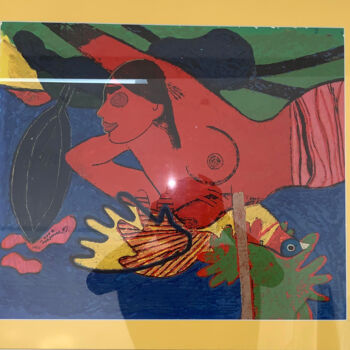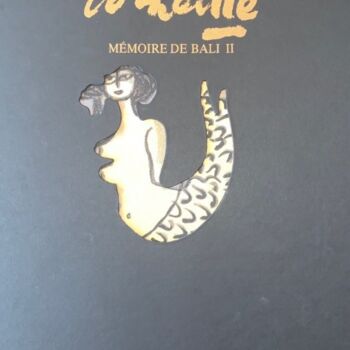Sold
See more from Guillaume CorneilleThe artist offers works on commission
Did you miss the opportunity to buy this work? Good news: the artist can also create a custom work, just for you!
Seller Viva la Vida Art Gallery
-
Limited Edition (#22/30 EA/30)
Printmaking,
Lithography
on Paper
- Dimensions Height 22.4in, Width 29.9in
- Framing This artwork is not framed
- Categories Printmaking under $5,000 Figurative
Lithograph
57 x 76 cm
Epreuve d'artiste op 30 exemplaren
EA 22/30
Corneille was one of the founders and one of the most important representatives of the Cobra movement. He was a very productive artist and made an enormous amount of paintings, sculptures and graphics. Initially strongly influenced by Picasso, but later with the very familiar style characteristics of the Cobra. Corneille worked abstractly, but from 1960 on he worked figuratively with the famous birds, women, and flowers as a subject.
Related themes
Guillaume Corneille, born as Guillaume Cornelis van Beverloo on July 3, 1922, in Liège, Belgium, was a prominent Dutch artist associated with the CoBrA movement and known for his vibrant and expressive paintings, sculptures, and prints.
Corneille's artistic journey began during World War II when he studied at the Academy of Fine Arts in Amsterdam. In the early 1940s, he became interested in Surrealism and joined the Reflex group, where he met artists such as Karel Appel and Constant Nieuwenhuys. These encounters laid the groundwork for what would become the CoBrA movement, named after Copenhagen, Brussels, and Amsterdam, where its founding members were based.
CoBrA emerged in the late 1940s as a reaction against academic traditions and sought to liberate artistic expression through spontaneity, experimentation, and a rejection of formal constraints. Corneille's early works, characterized by bold colors, primitive forms, and childlike spontaneity, embodied the spirit of CoBrA and contributed to its dynamic, expressive style.
Corneille's art often depicted fantastical landscapes, imaginary creatures, and human figures rendered in a raw and gestural manner. His use of vibrant colors and simplified forms reflected his interest in exploring the subconscious and the primal impulses of humanity.
Throughout the 1950s and 1960s, Corneille's artistic career flourished. He participated in numerous CoBrA exhibitions and gained international recognition for his contributions to modern art. His works were featured in prestigious galleries and museums around the world, solidifying his reputation as a significant figure in the European avant-garde.
In addition to painting, Corneille also ventured into sculpture, ceramics, and graphic design, further expanding his artistic repertoire. His collaborations with poets and writers underscored his interdisciplinary approach and his belief in the interconnectedness of art forms.
Later in his career, Corneille continued to evolve as an artist, exploring new themes and techniques while remaining true to his expressive and intuitive style. He lived and worked in various countries, including France, the Netherlands, and the Caribbean, each influencing his artistic vision and subject matter.
Guillaume Corneille passed away on September 5, 2010, leaving behind a rich legacy of vibrant and emotive artworks that continue to captivate audiences and inspire new generations of artists. His contributions to the CoBrA movement and his commitment to artistic freedom and creativity ensure his place among the most influential European artists of the 20th century.
-
Nationality:
BELGIUM

- Date of birth : unknown date
- Artistic domains: Represented by a Gallery,
- Groups: Contemporary Belgian Artists Artists presented by a gallery





 Guillaume Corneille: A Vibrant Visionary of Modern Art
Guillaume Corneille: A Vibrant Visionary of Modern Art



